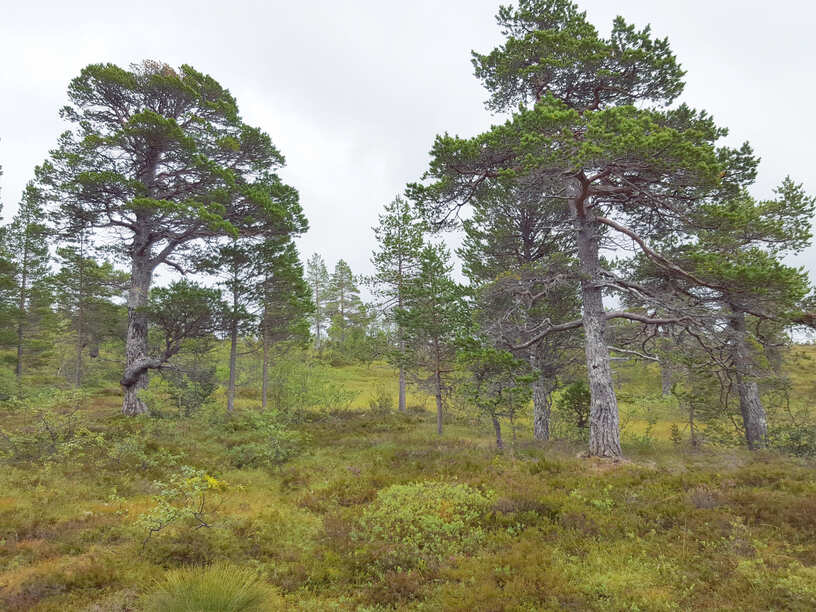Edible mushrooms that grow under pine trees can be a delightful find for foragers and nature enthusiasts. These mushrooms, known as Saffron Milk Caps (Lactarius deliciosus) and Slippery Jacks (Suillus spp.), offer a unique culinary experience and can be a valuable addition to your diet. However, it’s crucial to understand the safety considerations and proper identification techniques to ensure a safe and enjoyable mushroom-hunting experience.
What are the Key Features of Edible Mushrooms Under Pine Trees?

Saffron Milk Caps (Lactarius deliciosus)
- Cap: Reddish-orange with darker dots, 4-15 cm in diameter.
- Flesh: Firm, pale in the center, stained reddish by milk around the edge.
- Gills: Orange, becoming flushed or spotted with green.
- Base: Broad leg that narrows towards the base, 2.5–5 cm long, 2.5 cm thick.
- Appearance: Reddish-orange, becoming green/blue when bruised, spotted, or cut.
- Spores: Cream in mass, broadly ellipsoid, and average size 8.5 x 6.5 microns.
- Location: Found in pine plantations across South-eastern Australia, under older trees where the pine needles are thicker.
- Season: Depending on conditions (temperature and rain) from March to May.
Slippery Jacks (Suillus spp.)
- Cap: Brown, up to 12 cm in diameter at maturity, initially hemispherical, later flattening out.
- Underside: Tiny, circular pores, initially light yellow, turning olive to dark yellow with maturity.
- Flesh: Pale yellow or white, unchanging.
- Base: Stout, rather short, 2.5–5 cm long, with a large purplish-brown membranous ring.
- Spores: Clay to ochre in mass, smooth, spindle-shaped, average size 8.5 x 3.3 microns.
- Location: Found in pine plantations across South-eastern and South-western Australia, under older trees where the pine needles are thicker.
- Season: Depending on conditions (temperature and rain) from April to June.
What are the Safety Considerations for Edible Pine Tree Mushrooms?

Toxic Species
While Saffron Milk Caps and Slippery Jacks are considered edible, it’s essential to be aware of the potential presence of toxic mushroom species in pine forests. Some examples of toxic mushrooms include:
- Fly Agaricus (Amanita muscaria): Known for its hallucinogenic properties, but can cause nausea and vomiting.
- Laughing Jim (Gymnopilus junonius): Not edible and can cause adverse reactions.
- Ghost Fungus (Omphalotus nidiformis): Bioluminescent, but not edible.
Common Misconceptions
- False Identification: Ensure accurate identification by checking all features, as similar-looking mushrooms can be poisonous.
- Raw Consumption: Never eat raw mushrooms, as they may contain harmful bacteria. Always cook mushrooms before consumption.
Guidelines for Safe Consumption
- Collect Carefully: Use a digging tool and wax paper to collect entire specimens, keeping them separate and avoiding crushing.
- Record Field Details: Note the habitat, habit, color, and distinctive features of the mushroom.
- Check and Double-Check: Ensure all features match those described in guides, and try a small amount first to test for adverse reactions.
How Can You Identify and Cultivate Edible Mushrooms Under Pine Trees?
Step-by-Step Cultivation Methods
- Preparation: Treat pine logs by boiling, scrubbing, and soaking to remove bacteria and lichen.
- Inoculation: Use Shiitake or Oyster mushroom spores, as they can grow on pine logs.
- Maintenance: Water regularly and wait at least a year for growth.
Optimal Growing Conditions
- Pine Logs: Fresh, less than 3 months old, and not too dry.
- Environment: Pine forests with older trees and thicker pine needles.
Necessary Tools or Materials
- Digging Tool: For collecting entire specimens.
- Wax Paper: For keeping mushrooms separate and avoiding crushing.
- Spore Print Kit: For identifying spore color.
- Cooking Equipment: For preparing mushrooms safely.
Reference Links
- Diego Bonetto’s Blog: Mushrooms in pine forests: the good, the bad and the glowing. (2015) https://www.diegobonetto.com/blog/2015/4/13/mushrooms-in-pine-forests-the-good-the-bad-and-the-glowing
- Missouri Department of Conservation: A Guide to Missouri’s Edible and Poisonous Mushrooms. (2021) https://mdc.mo.gov/sites/default/files/2021-03/MushroomGuide.pdf
- Reddit: Is it absolute to never use Pine logs for growing mushrooms? (2023) https://www.reddit.com/r/Permaculture/comments/17csat8/is_it_absolute_to_never_use_pine_logs_for_growing/.
